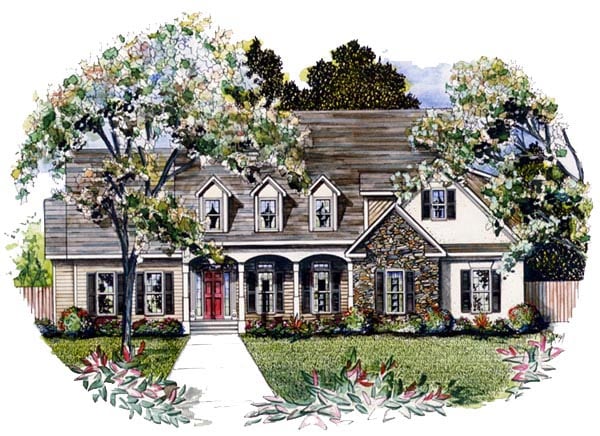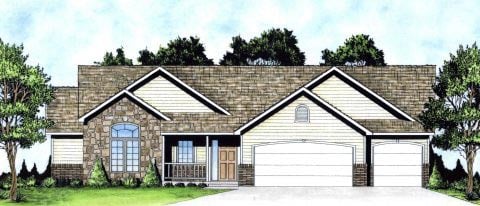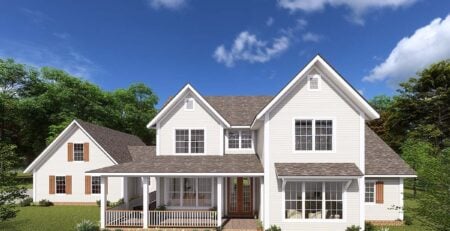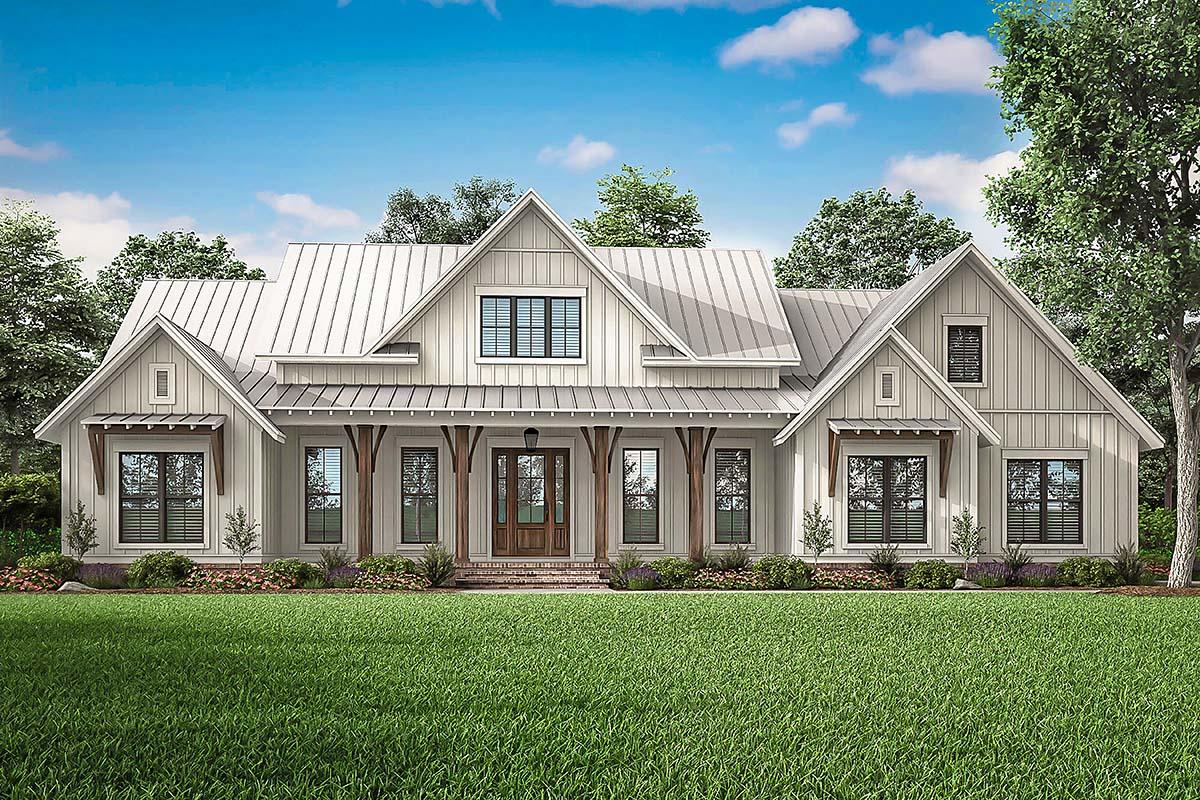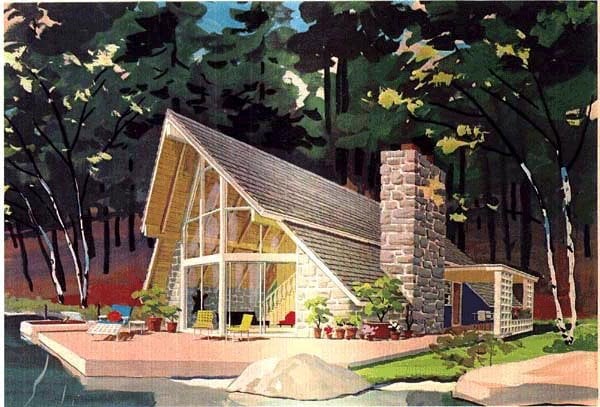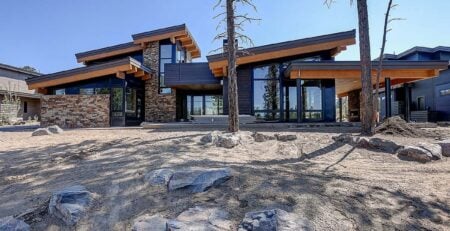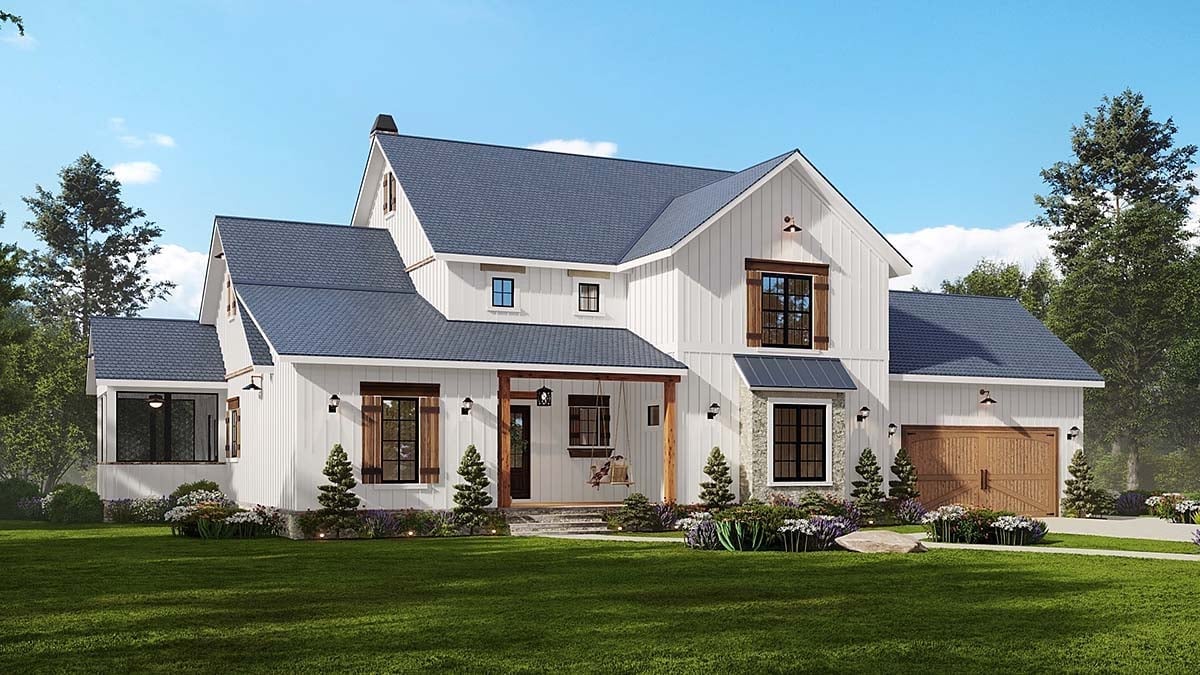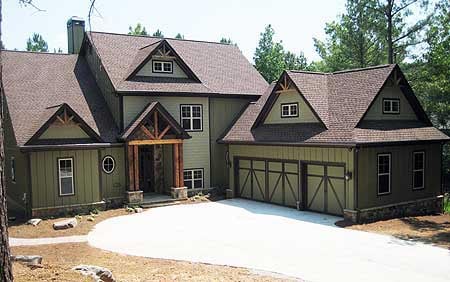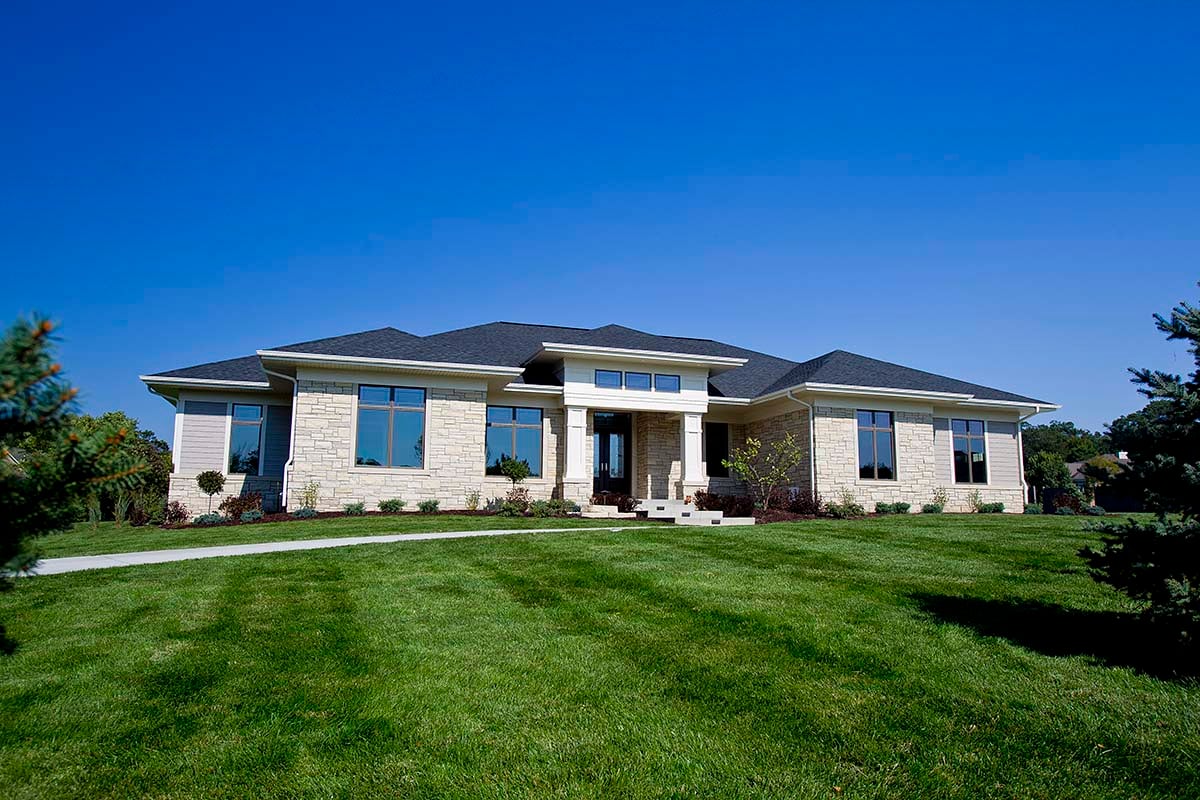High Performance Windows
High-performance windows bring comfort and save money. As you plan to build a new home, or upgrade your existing homes windows, shop smart when it comes to your window selection. Once you pick out your house plans take your window schedule to your local building supply warehouse to find the best window within your budget.
 These classic double-hung windows provide a traditional look while ensuring a high level of energy efficiency thanks to options like double or triple glazing, low-e coatings, and solid wood construction. (Photo Courtesy of Pella)
These classic double-hung windows provide a traditional look while ensuring a high level of energy efficiency thanks to options like double or triple glazing, low-e coatings, and solid wood construction. (Photo Courtesy of Pella)
When it comes to windows, the only thing separating the heated or cooled interior of your home from the cold or hot outside is a mere 1/16th-inch-thick pane of glass.
If the window is leaky, a good wind can blow out a candle on your end table. And that’s not the worst effect of inefficient windows. Depending on your point of view, the main problem associated with inefficient windows is either wasted energy, wasted money, or loss of comfort. Although each problem is bad enough alone, you’ll usually have all three.
On average, a home annually loses about 25% of heating energy and as much as 40% of cooling energy through inefficient windows, the home’s largest energy drain. Although very high quality energy-efficient windows can save you a lot of money on heating and cooling, don’t necessarily believe it when a salesperson tells you to expect to save up to half on your heating and cooling bills if you buy these windows.
Yet every home is different due to climate, the number of trees around the home, the number and size of windows, how high or low the thermostat is set, the insulating capacities of walls and ceiling, and the way the home is angled in relation to the sun. On average, energy-efficient windows can save you up to 6% on cooling costs and up to 13% on heating costs. So if your annual heating bill is $2,000 (not uncommon up north), you’ll save up to $260 a year and keep your home more comfortable.
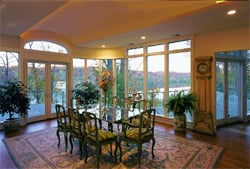 This elegant dining room is virtually surrounded by glass, natural light, and beautiful views. Without double-paned insulated glass or gas-filled panes and low-e coatings, the room would be uncomfortably hot in summer and cold in winter. (Photo Courtesy of Caradco)
This elegant dining room is virtually surrounded by glass, natural light, and beautiful views. Without double-paned insulated glass or gas-filled panes and low-e coatings, the room would be uncomfortably hot in summer and cold in winter. (Photo Courtesy of Caradco)
A World of Choices
Windows should prevent the flow of heat, whether it’s warmed, inside air moving out or hot, outside air moving in. This movement is called “heat loss,” when you lose heat, “heat gain,” when outside heat comes in. The effort to stop this movement is called “thermal resistance.”
For centuries, windows were made of wood and glass. Some very good and very energy-efficient windows are still made of wood, but they’ve been upstaged by the dozens of varieties of low-maintenance, energy-efficient windows on the market. Metal, composite, fiberglass, vinyl, and wood window frames are available with either single-pane, double-pane, triple-pane, and low-e glass, inert-gas-filled double or triple panes.
Multiple-pane glazing refers to two or more panes of glass separated by a spacer that also works to reduce the flow of heat. A double-glazed window is twice as resistant to heat flow as a single pane. A third pane increases thermal resistance, but it’s not really cost effective.
Within the multiple-pane category exists gas-filled units, in which a non-toxic gas such as argon or the more-expensive krypton is injected between the panes to retard the flow of heat. Both gases are odorless and clear.
A recent and beneficial advancement in window technology is the introduction of low-emissivity or “low-e” coatings. Low-e coatings are simply incredibly thin layers of metal that coat the glass and reduce the flow of heat. Though such a coating retards heat loss or gain, it miraculously doesn’t affect the amount of sunlight streaming in.
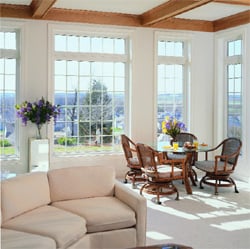 These energy-efficient vinyl windows inlcude what the maker calls GIA, or grills in airspace, which are simulated divided light grills installed between two pieces of insulating glass. (Photo Courtesy of Kolbe Vinyl Windows and Doors)
These energy-efficient vinyl windows inlcude what the maker calls GIA, or grills in airspace, which are simulated divided light grills installed between two pieces of insulating glass. (Photo Courtesy of Kolbe Vinyl Windows and Doors)
Measuring the Differences
The differences between some windows are obvious, even if you don’t know what those differences mean. For instance, on close inspection, it’s pretty obvious if a window has more than one pane of glass. But you can’t tell by looking if it has a low-e coating, or if the space between the double panes is filled with an inert gas.
To help consumers better understand these things, the National Fenestration Rating Council (www.nfrc.org) has devised a label that displays a window’s energy performance. The NFRC says its energy performance label “can help you determine how well a product will perform the functions of helping to cool your building in the summer, warm your building in the winter, keep out wind, and resist
condensation. By using the information contained on the label, builders and consumers can reliably compare one product with another, and make informed decisions about the windows, doors, and skylights they buy.”

